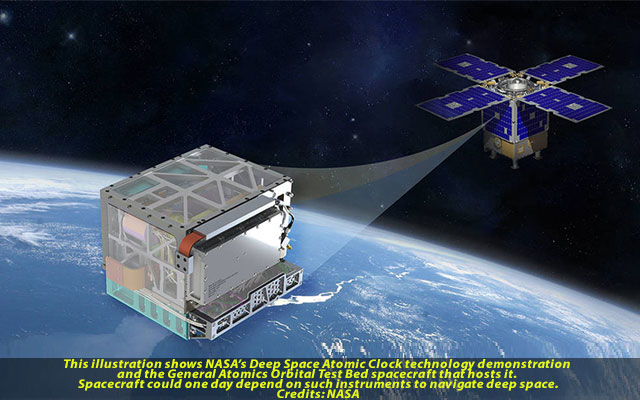Washington: NASA’s Deep Space Atomic Clock, which has, since two years, pushed the timekeeping frontiers in space, has successfully ended its mission.
The mission ended on September 18, the US space agency said in a statement this week.
It is built by NASA’s Jet Propulsion Laboratory in southern California. The Deep Space Atomic Clock is an ultra-precise, mercury-ion atomic clock encased in a small box. The device measures about 25 centimetres on each side — roughly the size of a toaster.
Therefore, The instrument on General Atomics’ Orbital Test Bed spacecraft launched aboard the Department of Defense Space Test Programme 2 mission on June 25, 2019.
It survives the rigours of launch and the cold, high-radiation environment of space without its timekeeping performance degrading. It aimed to test the feasibility of using an onboard atomic clock to improve spacecraft navigation in deep space.
The instrument had completed its one-year primary mission in Earth orbit. NASA Then extended the mission to collect more data because of its exceptional timekeeping stability. The tech demo was powered off on Septmeber 18. The mission extracted as much data as possible in its final days, NASA said.
“The Deep Space Atomic Clock mission was a resounding success. The gem of the story here is that the technology demonstration operated well past its intended operational period”. Todd Ely, principal investigator and project manager at JPL, explained, in a statement.
The data from the trailblazing instrument will help develop Deep Space Atomic Clock-2. This tech demo will travel to Venus aboard NASA’s Venus Emissivity, Radio Science, InSAR, Topography and Spectroscopy (VERITAS) spacecraft when it launches by 2028.
This will be the first test for an atomic clock in deep space. Also, monumental advancement for increased spacecraft autonomy, NASA said.
An atomic clock onboard a spacecraft paired with a navigation system, helps calculate its exact distance, speed, and direction of travel.
However, it needs to be stable. Fractions of a second could mean the difference between safely arriving at Mars or missing the planet altogether.
“NASA’s deep space atomic clock succeeded in this goal,” said JPL’s Eric Burt, an atomic clock physicist for the mission.
“We have achieved a new record for long-term atomic clock stability in space – more than an order of magnitude better than GPS atomic clocks. This means that we now have the stability to allow for more autonomy in deep space missions and potentially make GPS satellites less dependent on twice-daily updates if they carried our instrument,”he added.


















